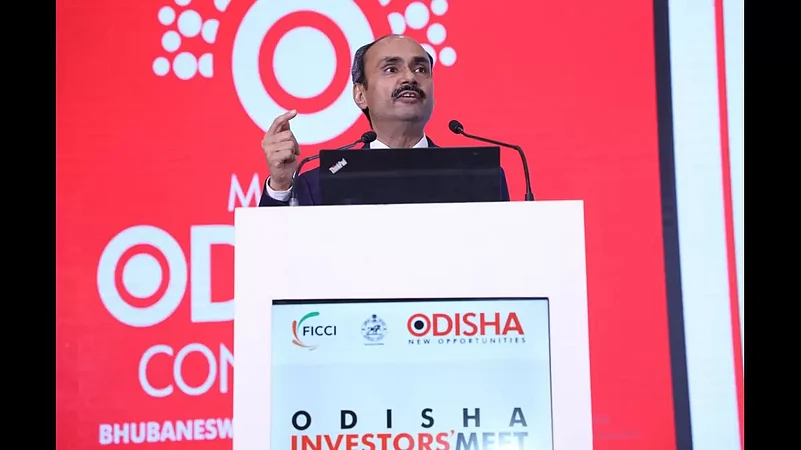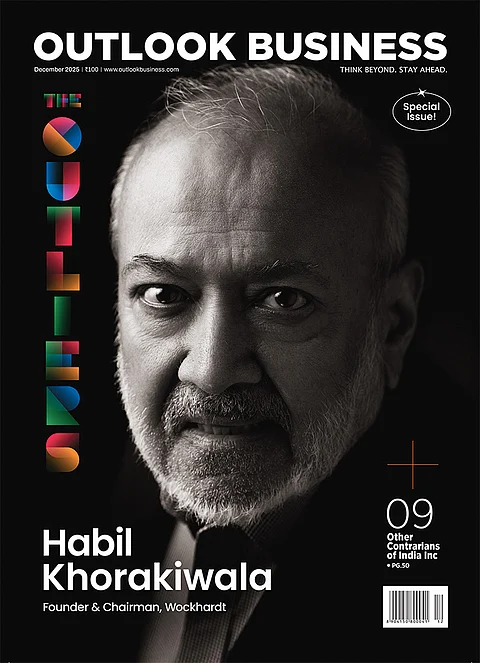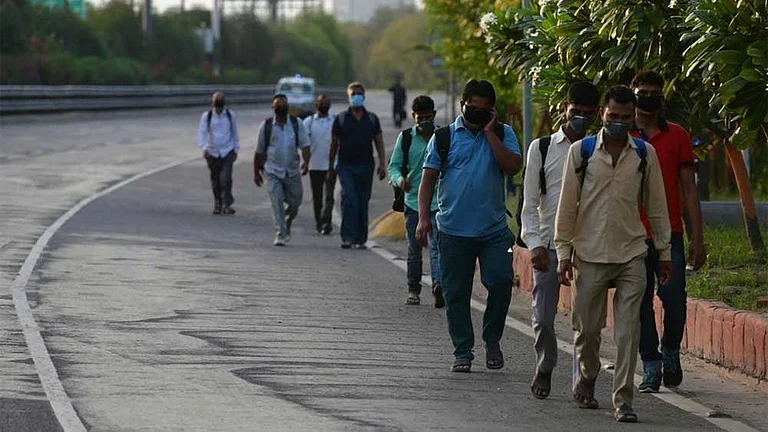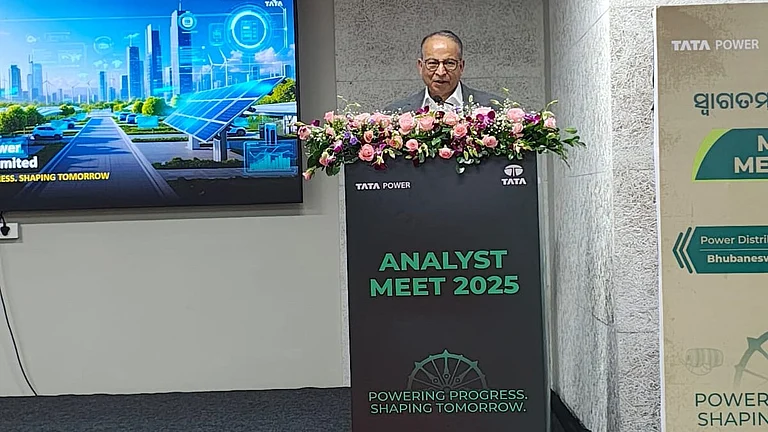Make in Odisha Conclave: Investor summits are the flavour of the season. From Uttar Pradesh and Karnataka to Madhya Pradesh and Odisha, every state is vying for the same set of industrialists to get investments. While some states have the benefit of being governed by the party in power at the Centre, other states are playing on their natural advantage in certain sectors. Just ahead of the Make In Odisha Conclave, which will be held from 30th November to 4th December, 2022, Outlook Business spoke with Hemant Sharma, Principal Secretary, Department of Industries, Government of Odisha. In the interview, Sharma talks about challenges and advantages his state government has while negotiating with the industrialists at a time when every state is looking forward to these investments. Edited excerpts from the interview:
Every state is organizing an investor summit to attract investment. Since capital is limited and every state is handing out sops, what is Odisha offering to industrialists that other states are not?
It's good that all the states are competing to get investment. Investor summits are an instrument to get investments and to offer the investors a peek into the offerings and policies that are in place to aid the growth of industries. This is the third edition of the Odisha conclave. The first two editions were quite successful and between the two editions we could garner about Rs 4,52,000 crores worth of investments. Out of this, 62 per cent has been granted, that is the difference between our summits and other states.
We don't really sign MoUs (Memorandum of Understanding) with investors anymore. From 2015 onwards, we have only taken investments from those industries that show maturity in terms of announcing their investments. Our strike rate is definitely better than some of the other states.
The second point is that we focus on certain sectors. We know that investors will have advantages in certain specific states, and not others. Everything cannot be manufactured or provided everywhere. We have certain advantages. Like, we are rich in minerals, so mining, steel, aluminum and everything that has to do with mining and metallurgy is our forte. It gives us a good position in the market.
These industries also drive other industries such as logistics. Today we have 30 million tonnes of steel being made in Odisha and 4 million tonnes of aluminum being made in Odisha. Steel production is projected to go up to 80 million tonnes whereas aluminium will be doubled.
Being a coastal state, we have the benefit of having access to port. This provides us ample advantage of developing port-based industries similar to how Gujarat and Andhra Pradesh have successfully done. We are trying to emulate that by setting up large industries near the port. Similarly, we are also looking at private sector participation in setting these up. This is something we are trying afresh.
There are several new sectors that are employment intensive. Whether you go to Coimbatore, Tirupur, Surat or Delhi-Noida, the people who work in garment-apparel manufacturing are from Odisha. So why don't we attract these industries in Odisha by giving them the required infrastructure and other incentives?
Thirdly, we do not offer across-the-board incentives to all industries. We offer incentives to only few categories. For example, companies in sectors like IT (Information Technology), ITeS (Information Technology enabled Services), auto components, speciality steel, chemicals, and textiles. Then there are priority sectors that are linked to food processing, packaging, plastic, and other ancillaries of metals and minerals.
We target only a few sectors, therefore our incentives are little higher compared to competing states. For example, we offer 30 per cent capital investment subsidy without any upper limit to the targeted sectors. So, if somebody sets up a steel manufacturing plant, they get 30 per cent capital investment subsidy. This is how we have tried to structure it.
You mentioned that you're trying to attract IT and ITeS industry, but the kind of people who work in these industries are very different from the traditional industry workers. For example, if you want to make an IT hub like Bangalore or Hyderabad, you have to make cultural changes such as having a happening nightlife. Similarly, you need good engineering colleges so that companies are able to get those early entry-level engineers. Have you considered such cultural aspects of setting up a modern industry as well?
As far as IT and ITeS are concerned, talent of a higher order is required. Even today, we have a good presence of such industry. We have all the big names like TCS, Infosys, Wipro, Mindtree, and Tech Mahindra. Based on our learnings from Hyderabad and Pune, we have set up a very large Info Valley in the outskirts of Bhubaneshwar. We have over 500 acres of land as Info City which is now fully saturated and is almost within Bhubaneswar.
Now, on the outskirts of Bhubaneswar, we are setting up a very large campus called Info Valley that is more than 750 acres. Infosys is the first brand there and they already have a 25-acre campus. Adani has now taken 10 acres. There are other big companies looking to set up big data centres. We have a sort of mixed social infrastructure with hotel properties, multiplexes, and malls in that range. So, with the kind of offering we have, and with the growing urban complex of revenue share, our attractiveness will further increase.
Odisha has been traditionally rich with mines and minerals-based industries. Whereas, the future of every economy around the world will depend on semiconductors. Gujarat has also recently got one semiconductor factory. Is Odisha also trying to attract some these kinds of industries to its state?
Of course, we are. Not just Odisha, but several states. We have offerings for what we call 'New Age' technology industry. So, while we have attractive policies as of now, we have not been able to really convert any intent into real agreement. So, we are talking to a few mid-ranking companies and we will see to it that in the upcoming Make In Odisha conclaves, we will certainly be able to announce something on that.
What are the requirements of these industries? What is it that you have learned from Gujarat with regard to attracting such industries?
First of all, semiconductor is a very wide term. I would say it has several components. This entire value chain would require very large land parcels close to urban areas, high-quality industrial power and water that is available at a very low price. Our entire industrialisation effort is based on mineral mining. We have given enough volume of water to steel industry and the coal industry. So, we can give this to semiconductor manufacturers also.
However, we feel that with the very wide value chain of semiconductor industry, we will certainly get important portions of it to begin with, and then, over a period of time, other portions of the value chain will also come to Odisha. We also have a possible port-based industrialisation, which would enable the superconductor companies to have easy imports and exports.
In the initial few years, this industry is less about design and manufacturing and is more about assembly and packaging. Therefore, we still stand a chance although it may not be the size of Gujarat because only one or two such plants can come up in a country like India. But we will certainly strive for a significant part of this value chain, which is more employment intensive and less energy intensive.
How far does the personal relationship of the state government go in convincing an industrialist to invest in the state. For example, Gautam Adani is from Gujarat, and a lot of his investments go to Gujarat. So is the case with Mukesh Ambani. Do you think that because there is a lack of big industrialists coming out of Odisha it acts as a handicap? Or it is just purely incentive based?
Oh, it is certainly not just incentive based. Our government's view is that three things matter in terms of attracting investment. First is infrastructure, which is more important than incentive. Today's industries want ready-to-move-in land parcels and availability of water, power, and connectivity on day one. So, states who are able to do that gather all the investments irrespective of where the investment is coming from.
Second is incentive. Presently, industries have to compete at every price point when it comes to cost of power, land, and manpower. The overall cost of doing business is very important. Therefore, we try to keep our industrial land prices low. We also try to keep our water and power prices low and make it available at places where it matters. And therefore, incentivisation is also important.
The third most important factor is governance. You might have the infrastructure and the incentives, but if there is no efficient governance, then the industries won't be attracted. I don't want to take names but there are states that face this issue. Our unique selling proposition is our government. Our CM has been doing things right for 22 and a half years, otherwise it is not possible to last this long in India's intensely democratic set-up.
Efficient governance is something that every industry, irrespective of where they are coming from, look forward to. If the government is focused and strong, then the required infrastructure will be available. Industries can pay for the land; they can actually get possession of the land and then they can do business in peace without any interference and harassment.
That being said, I will not deny that having local entrepreneurs who have grown and made progress is an added advantage. That is why states like Maharashtra, Karnataka, Andhra Pradesh and even Punjab, to an extent, are way ahead.
Has the state sought any support from the Centre to promote industrial activity?
We work very closely with Government of India and in fact, we have taken natural advantage of all the Government of India schemes that come. Whether it is for infrastructure development or for common rail infrastructure. We work very closely with inland waterway authorities, the Ministry of Ports and Shipping, Ministry of Coal and Ministry of Mines. We get all the adequate support from the Centre.
Industries also have the pressure of turning green to help India meet its ESG (environmental, social, and governance) targets which is part of the global consensus that the country is trying to build. What incentives and policies are you introducing to help industries achieve the targets despite the tremendous pressure?
Yes, this is especially the case with steel, and other energy-heavy industries. They are facing a lot of pressure on ESG concerns, particularly the 'greening' challenges they have. As of now, we have not really incentivised this part. But in the upcoming industrial policy, we will be bringing out separate provisions for decarbonisation of energy intensive industries so that the new steel plants would not be as coal intensive as the old ones. If we need to sustain even our current level of industrial activity, we will need to provide a huge state government support to this segment. So, we are conscious of that and are in consultation with the industry, and we have prepared a good package which will be announced in the Make In Odisha conclave.
Tamil Nadu, Maharashtra and Gujarat are the most developed states of India in terms of infrastructure and per capita income. Have you set yourself a target that you want to be at their level in a certain number of years?
Strictly speaking, we do not have numerical targets. The certain targets that we have are to broaden our industrialisation in terms of sectors, and to have a good geographical spread of industries that is not limited to Bhubaneswar. Also, we have to ensure that while large industries continue to grow, our micro, small and medium enterprises also find the space and opportunities to grow.
So, we review ourselves on three counts alone. First, how much of non-traditional sectors have we been able to attract? So, let's say one food processing industry or one apparel garment industry is a bigger achievement for us rather than 1000 crore steel plant. You can see it in this manner.
Second, how many industries have we been able to take towards industrially backward districts, which essentially happens through micro, small and medium enterprises? If you look at our graph on these two counts, our graph is rising at the desired curve. And we certainly know that Andhra, Karnataka, Telangana, Maharashtra and Gujarat are all examples for the entire country to emulate.
From Andhra and Telangana, we have learned that unless the social infrastructure grows, along with your industrial infrastructure, the knowledge-based industries will not come up. Now, when we picked up Info City, we needed to get 700 acres of industrial land. There was no land for private real estate developers or any social infrastructure to come up. Then we took 750 acres for Info Valley and another 250 acres only for social infrastructure with private sector participation.
There was a time when India faced a lot of protests whenever the state government wanted to acquire land. It happened in Odisha, in Uttar Pradesh, and elsewhere. How are you managing the protests, especially the ones that rises from green activism or an emotionality attached to the land?
This continues to be a challenge for us and for everybody else. Large scale land acquisition in India is a challenge. We have also learned from our own mistakes in the past. Now when we try to acquire land, we try to get better land prices and we also try to involve land losers in employment generating activities. On the green fronts, we have not faced as many challenges as some other states have done because we never had this kind of activism.
However, we did face different challenges for large scale land acquisition. People had not really seen the benefits which happen once industrial activity picks up. I'll just give you one example. In Paradip, we had POSCO coming in 2003, and from 2004 to 2010, we were struggling for six years to give them about 4,000 acres of land. And we really thought the challenge there was determined public resistance. Being a very people-oriented government, we said that if people do not want, we will not acquire the land. After four years, from 2009-10 onwards, we have been continuously acquiring land for big companies.
The Paradip Refinery of Indian Oil Corporation (IOC) is a good example. We learned from the POSCO mistake, and there was a good package, and a good R&R policy for people. We were able to successfully acquire about 2000 acres of land. After the refinery, a huge complex of downstream industries in plastics and polymers has come up. With that example, we recently acquired for JSW steel plant, without any opposition, the same land which we failed to acquire for POSCO. In the case of POSCO, we could not do it for six years. For JSW, we completed it in one and a half years. Not because of anything else, except that the IOC example served the purpose of convincing people that they will not be left behind in this developmental process. They will get their due.































